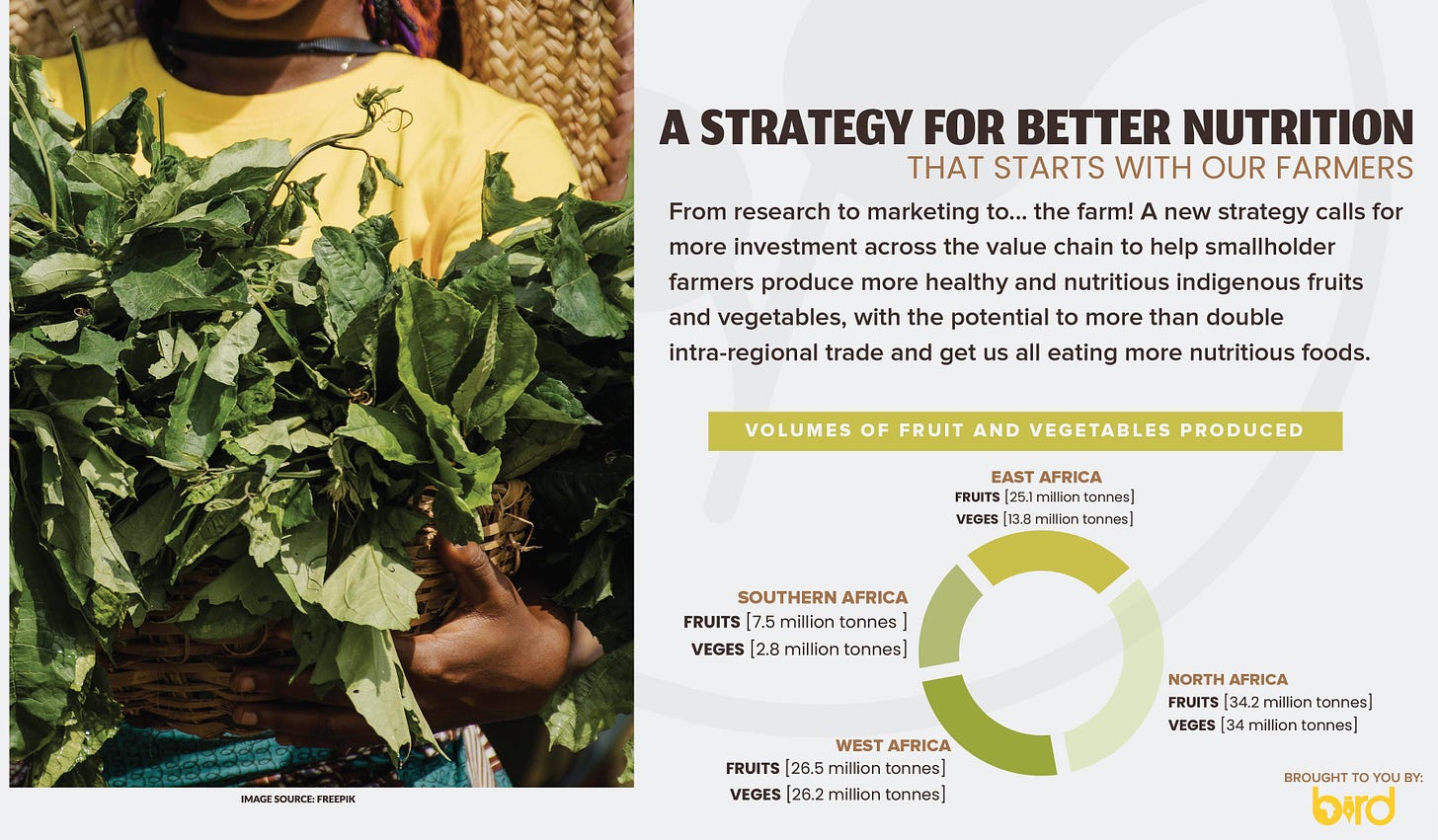A strategy for better nutrition - that starts with our farmers
## From research, to marketing to... the farm! A new strategy calls for more investment across the value chain to help smallholder farmers produce more healthy and nutritious indigenous fruits, etc.
## From research, to marketing to... the farm! A new strategy calls for more investment across the value chain to help smallholder farmers produce more healthy and nutritious indigenous fruits and vegetables, with the potential to more than double intra-regional trade and get us all eating more nutritious foods.
By Conrad Onyango, bird
Even though millions can easily afford it, the majority of us are still not eating the quantity of fruit and vegetables recommended by the World Health Organisation - and by our doctors. While some do struggle to afford high-cost items, others have to overcome logistical issues, while many simply choose diets that are unhealthy.
However, a new East African strategy looks to change this by removing hurdles along the value chain and making it easier for up to two-thirds of Africans to gain access to healthy fruits and vegetables.
The strategy, dubbed, Comprehensive Fruits and Vegetables Value Chain Strategy and Action Plan 2021-2031, developed by the East African Community Secretariat, calls for more investment in exotic fruits and vegetables that also have the potential to boost trade values in the region.
“The intra-EAC trade of fruits and vegetables is currently at 9.9 million. We urge more investments in the nutritional and medicinal indigenous fruits and vegetable sector,” said Christophe Bazivamo, Deputy Secretary-General of EAC in a statement.
According to the Secretariat, the strategy will help the six-country bloc more than double its value of trade in fruits and vegetable to 25 million US dollars and boost exports to 1.3 billion US dollars over the next decade.
The export of vegetables is seen rising to 950 million dollars and fruits to 350 million US dollars by 2031 from the current 416 million dollars and 125 million US dollars respectively.
Another report released earlier this year, International Year of Fruits and Vegetables, 2021 by the Food and Agricultural Organization (FAO), showed that sub-Saharan Africa consumes the least amount of fruit and vegetables in the world - despite widespread production and even exports.
WHO recommends 400g of fruit and vegetables each day – good enough to offer health and nutritional benefits.
The report links the low consumption of fruits and vegetables to their high cost - accounting for up to 16 percent of the total food budget in the region.
“Where incomes are generally low as in sub-Saharan Africa and South Asia, people tend to spend their limited food budget on cheaper staple foods,” says the report.
About 3.9 million annual deaths worldwide are linked to a lack of sufficient fruit and vegetables in diets, according to the WHO.
The EAC value chain strategy challenges countries to improve their capacity to produce more fruit and vegetables by - amongst others - strengthening research and development, innovation, packaging, market access and trade facilitation.
Currently, fruits and vegetables contribute between 20 percent and 36 percent of regional Gross Domestic Product.
“Despite the potential, the regional Fruits and Vegetable sector production is fragmented, smallholder dominated, and with low yield and productivity,” says the secretariat.
According to FAO, about 80 percent of fruits and vegetables are grown in small farms in most parts of sub-Saharan Africa and other developing countries in Asia.
Between 2000 and 2018, the production of fruits and vegetables had its biggest increase in Central Africa, recording nearly triple in the amount of fruit and double the volume of vegetables, even if from a very low base, say the report.
The production of vegetables also doubled in East and West Africa - showing that there is plenty of potential for many more of us to eat in a more nutritionally sound manner.
Northern and Western Africa accounts for the largest absolute production volumes of fruit and vegetables with Southern Africa producing the least in the continent - despite being a big exporter of fruit and processed foods.
North Africa came top with 34.2 million tonnes of fruits and 34 million tonnes of vegetables, followed by West Africa with 26.5 million tonnes of fruits and 26.2 million tonnes of vegetables.
East Africa produced 25.1 million tonnes of fruit and 13.8 million tonnes of vegetables while Southern Africa produced 7.5 million tonnes of fruit and 2.8 million tonnes of vegetables.
bird



